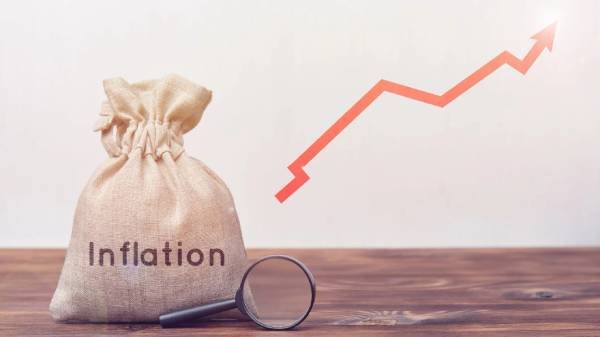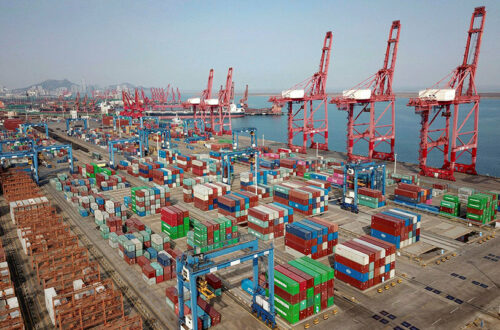
Specialists Say ,As Inflation Hits 40-Year-High , US Going Towards Downturn
- The customer cost file for February rose 7.9% from a year prior, the most elevated level since January 1982.
- Barring food and energy, the two of which moved forcefully higher during the month, center expansion actually rose 6.4%, in accordance with assumptions however the most noteworthy since August 1982.
- Gas, food and haven were the greatest supporters of the CPI gain. Auto costs facilitated.
- Laborer checks fell further behind, as expansion changed income dropped 0.8% in February, adding to a 2.6% decay throughout the most recent year.
‘We are apparently following a similar equation’ of the Carter organization, one master says
Expansion hit a 40-year high in February, and the most awful is on the way as the U.S. economy barrels toward a downturn, specialists say.
The customer cost list (CPI) climbed 7.9% on a yearly premise, as per information delivered Thursday by the Bureau of Labor Statistics. Month more than month, expansion rose 0.8%.
Expansion deteriorated in February in the midst of the raising emergency in Ukraine and cost pressures that turned out to be more dug in.
The customer cost file, which estimates a wide-running bin of labor and products, expanded 7.9% throughout the course of recent months, a new 40-year high for the firmly followed measure, as per the Labor Department’s Bureau of Labor Statistics.
The February speed increase was the quickest pace since January1982, back when the U.S. economy went up against the twin danger of higher expansion and diminished monetary development.
Gas hopped 6.6% in February and represented close to 33% of cost climbs. Food rose by 1%.
The February information does exclude Russia’s conflict on Ukraine, which has sped up the ascent in gas costs. As of Thursday, the U.S. public normal hit a record high of $4.35 per gallon.
On a month-over-month premise, the CPI gain was 0.8%. Financial analysts studied by Dow Jones had anticipated that feature expansion should increment 7.8% for the year and 0.7% for the month.
Food costs rose 1% and food at home hopped 1.4%, both the quickest month to month gains since April 2020, in the beginning of the Covid-19 pandemic.
Energy additionally was at the front of swelling costs, up 3.5% for February and representing around 33% of the feature gain. Cover costs, which represent around 33% of the CPI weighting, sped up another 0.5%, for a year ascent of 4.7%, the quickest yearly increment since May 1991.Geltrude and Company originator Dan Geltrude told FOX Business he thinks gas costs will hit $5 this month and that it really might go as high as $10 except if the Biden organization extends homegrown oil creation.
“It would make perfect sense,” he said. “So until the United States chooses, or this organization concludes that we will siphon more oil, it won’t change. It’s not. Fuel costs are simply going to keep on rising.”
Geltrude said the U.S. is on target to enter an all out downturn soon.
“If nothing somehow managed to transform, I see that occurrence inside the following six to a year,” he said. “Fuel costs are soaring, which impacts everything, since generally labor and products go from direct A toward point B utilizing fuel. So as those costs go up, the cost of everything goes up.”
Barring unpredictable food and energy costs, purported center expansion rose 6.4%, in accordance with gauges and the most noteworthy since August 1982. Consistently, center CPI was up 0.5, additionally predictable with Wall Street assumptions.
The ascent in expansion implied specialist checks fell further behind in spite of what in any case would be viewed as solid increments.
Genuine expansion changed normal hourly income for the month fell 0.8% in February, adding to a 2.6% decay throughout the most recent year, as indicated by the BLS. That came despite the fact that feature profit rose 5.1% from a year prior, yet were offset by the cost flood.
Geltrude said the Federal Reserve will ultimately be compelled to make a forceful move by “drastically” expanding financing costs, which will toss the country into a downturn.
“It occurred during the Carter organization,” he said. “We are apparently following that, various times, yet we are by all accounts following a similar equation. … Back then, at that point, what was going on, costs at the siphon [were] crazy, expansion [was] wild, so to return those things to normal, meaning expansion, the Federal Reserve expanded loan fees drastically. Also, eventually, that tossed us into a downturn.”
“Expansion is coming in hot yet actually there are no genuine astonishments in this report,” said Mike Loewengart, overseeing head of speculation system for E-Trade. “The market probably currently valued the expansion in as needs be, and is rather eagerly centered around Ukraine and the downstream effect from wares, which are now sending shockwaves through the market.”
The expansion flood is with regards to cost gains throughout the most recent year. Expansion has thundered higher in the midst of a phenomenal government spending barrage combined with tenacious store network interruptions that have been not able to stay aware of upgrade energized request, especially for merchandise over administrations.
The president reported Tuesday a restriction on Russian oil, gas and energy imports to the U.S. with an end goal to debilitate Russian President Vladimir Putin, cautioning that it would add to the ascent in costs.
“Relaxing natural guidelines won’t bring down costs,” the president proclaimed in a tweet Tuesday evening. “However, changing our economy to run on electric vehicles, fueled by clean energy, will imply that nobody should stress over gas costs. It can mean dictators like Putin won’t involve non-renewable energy sources as a weapon.”
A seething emergency in Europe has just taken care of into the cost pressures, as authorizations against Russia have matched with flooding gas costs. Costs at the siphon are up around 24% over only the previous month and 53% in the previous year, as indicated by AAA.
To attempt to stem the pattern, the Federal Reserve is relied upon the following week to declare the first of a progression of loan cost climbs pointed toward easing back expansion. It will be whenever the national bank first has brought rates up in over three years, and imprint an inversion of a zero loan fee strategy and remarkable degrees of money infusions for an economy that in 2021 developed at its quickest pace in 37 years.
“There are nations on the opposite side of the world utilizing messy energy,” he added. “We don’t have a vault over the United States that keeps us protected from that. So except if you have an aggregate exertion all over the planet, the United States having its respectable aims towards clean energy just puts us behind financially.”
Worldwide costs are dependent upon a considerable lot of similar elements hitting the homegrown economy, and national banks are answering in kind. On Thursday, the European Central Bank said it was not moving its benchmark financing cost yet would end its own resource buy program sooner than arranged.
Mia is a literature author. Mia was not interested in becoming a writer when she was a child, a fact which she himself admits that separates her from fellow writers she has met. As a young adult, Mia did not know what she wanted to be. she remembered, however, how in high school, she had been a class clown, and that made her decide to become a books writer. Later on, she moves toward the writing news articles. In recent she writes her news on Stock Invests.
Disclaimer: The views, suggestions, and opinions expressed here are the sole responsibility of the experts. No STOCK INVESTS journalist was involved in the writing and production of this article.





